The Future of Energy Storing Bricks
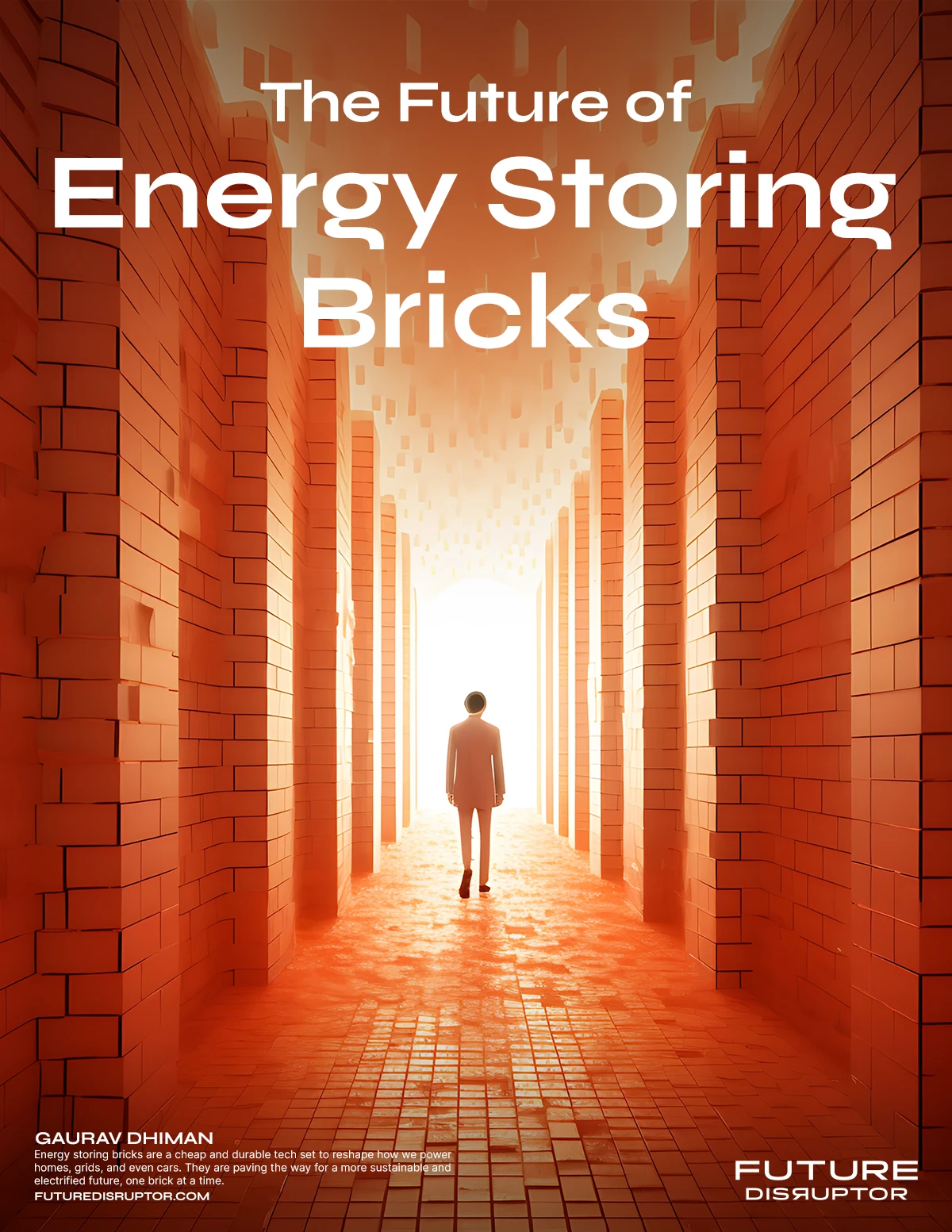
Imagine walls storing sunshine and releasing it at night, buildings powering themselves, and grids resilient against disruptions. This is the promise of future energy storing bricks. These innovative bricks integrate seamlessly into walls, capture excess renewable energy, smooth out the grid, and reduce reliance on fossil fuels.
Energy storing bricks are a novel form of concrete that aims to transform ordinary bricks into devices that can store electricity and power devices. It uses a chemical process to convert the red pigment in standard bricks into a conductive plastic that coats the pores inside the bricks. This plastic acts as a supercapacitor, quickly storing and releasing large amounts of charge. They can create intelligent, sustainable buildings that reduce carbon emissions and save energy.
They are also known as ElectroBricks, Smart Bricks, Energy Harvesting Bricks, and PEDOT Bricks.
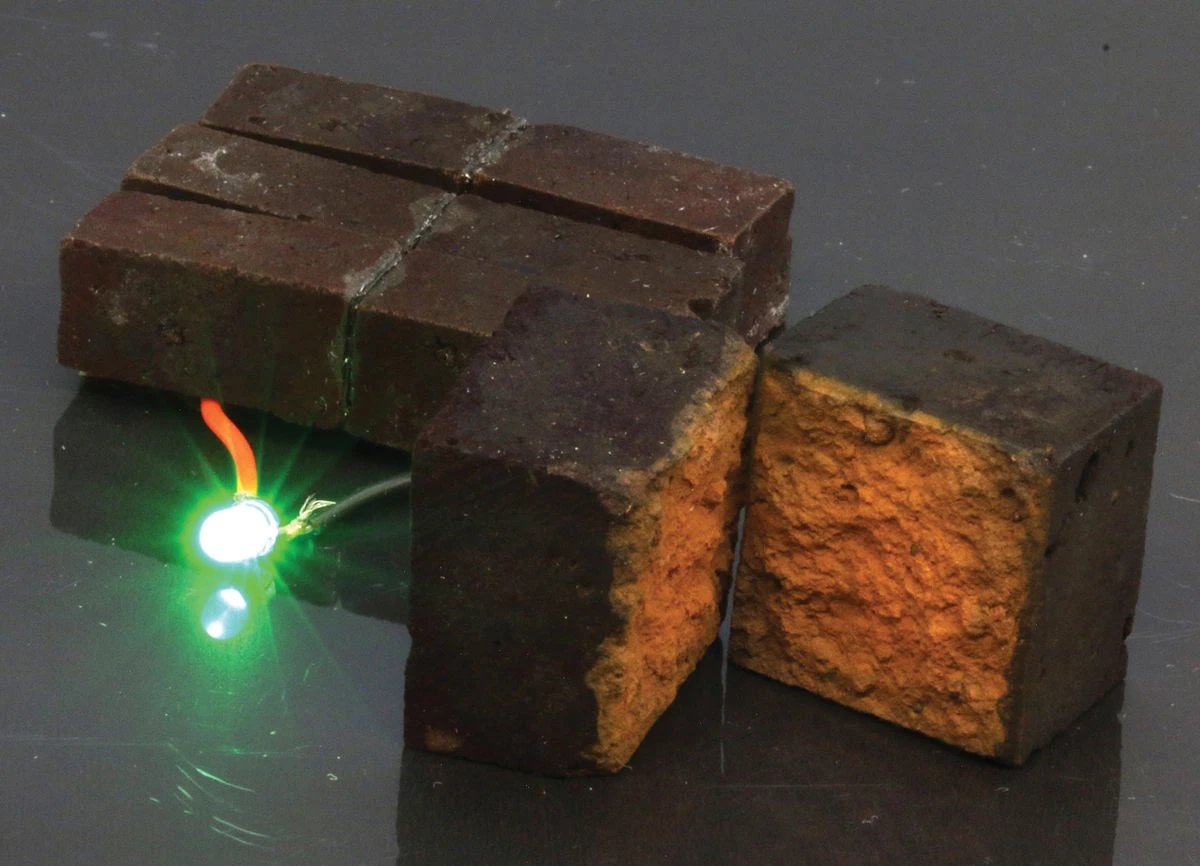
Practical Applications
Some of the practical applications of energy storing bricks are:
- Intelligent and sustainable buildings: They can be integrated into walls and coupled with solar panels to provide emergency power and lighting in case of power outages or emergencies. Also, it reduces buildings’ energy consumption and carbon footprint by storing excess solar energy during the day and releasing it at night.
- Portable and flexible devices: They can create lightweight and flexible devices powered by bricks or external sources. For example, we can make wearable electronics, sensors, or displays attached to clothing or other surfaces.
- Low-cost and accessible energy storage: They can be made from common and inexpensive materials, such as bricks, conductive polymers, and gel electrolytes. They can be easily manufactured and installed using existing brick-making and construction techniques. They can provide a low-cost and accessible solution for energy storage in remote or underdeveloped areas.
Importance for Our Future
Energy-storing bricks are game-changers for our future. They smooth out renewable energy fluctuations, empower communities with decentralized power, and seamlessly integrate into buildings, all at a cost-effective scale. They are a promising invention that could change the future of energy and sustainability.
How Does It Work?
Here is the step-by-step process overview of how energy storing bricks work:
- Prepare a mixture of hydrochloric acid and water, and heat it to 160°C. This acid vapor will dissolve the iron oxide in the bricks and release ferric ions.
- Place the bricks in a chamber and expose them to the acid vapor for about 10 minutes. This will turn the bricks from red to gray, indicating that the iron oxide has been converted to a reactive form of iron.
- Prepare a mixture of ethylenedioxythiophene (EDOT) and water, and heat it to 80°C. This monomer vapor will polymerize in the presence of the ferric ions and create PEDOT nanofibers.
- Place the bricks in another chamber and expose them to the monomer vapor for about 15 minutes. This will turn the bricks from gray to blue, indicating that PEDOT nanofibers have filled the pores.
- Prepare a gel electrolyte by dissolving sodium hydroxide and sodium sulfate in water and adding polyvinyl alcohol. This is the substance that will allow the movement of ions between the brick electrodes.
- Sandwich two brick electrodes with the gel electrolyte in between and seal the edges with epoxy. This will complete the supercapacitor brick, which can be connected to a power source and charged or discharged.
Evolve in the Future
Some of the ways that energy storing bricks can evolve in the future are:
- Increase the energy the bricks store using different types of conductive polymers, additives, or composites. This could improve the performance and efficiency of these bricks.
- Scale up the production and installation of the bricks by using existing brick-making and construction techniques or by developing new methods such as 3D printing. This could reduce the cost and time of making and using the bricks.
- Integrate the bricks with renewable energy sources like solar panels, wind turbines, or biofuels. This could create an innovative and sustainable energy system that can power various applications and devices.
- Charge electric vehicles directly from walls.
- Provide backup power for critical infrastructure.
- Power off-grid communities.
- Developing new applications, we can not imagine yet.
Help Organizations/Enterprises
Some of the ways that energy storing bricks can help organizations and enterprises and create business opportunities are:
- They can lower energy costs and improve the energy efficiency of buildings by storing excess solar energy during the day and releasing it at night. This can also reduce the dependence on fossil fuels and the grid and increase the resilience to power outages or emergencies.
- They can enhance the functionality and design of buildings by integrating intelligent and flexible devices powered by the bricks themselves or external sources. For example, these bricks can power wearable electronics, sensors, or displays attached to clothing or other surfaces.
- They can provide a low-cost and accessible solution for energy storage in remote or underdeveloped areas where resources are scarce or expensive. They can be made from common, inexpensive materials like bricks, conductive polymers, and gel electrolytes. Using existing brick-making and construction techniques, energy-storing bricks can be easily manufactured and installed.
Driving Adoption
The main factors driving the adoption of energy storing bricks technology are the increasing demand for renewable energy sources, the need for energy efficiency and conservation, and the development of smart and green buildings.
They could offer a solution for storing excess solar or wind energy and using it when needed, reducing the reliance on fossil fuels and the grid. They could also enable the creation of self-powered sensors and devices to monitor and control various aspects of the building environment, such as temperature, humidity, air quality, and security. They could also enhance bricks’ aesthetic appeal and functionality, making them more attractive for architects and designers.
Operational Challenges
Energy-storing bricks are still in the early stages of development and face some challenges in their operationalization. Some of the main challenges are:
- Improving the energy density: They have a relatively low energy density compared to conventional batteries, which means they can store less energy per unit volume or mass. This limits the amount of energy that can be stored and delivered, especially for applications that require high power or long duration. Researchers enhance energy density by optimizing the materials, structures, and processes of creating supercapacitors.
- Scaling up the production: They require a unique coating process to convert ordinary bricks into supercapacitors, which involves applying a conductive polymer and an electrolyte to the brick surface. This process is currently done manually in a laboratory setting, which is time-consuming and costly. The production process must be automated, scaled up, and integrated with the existing brick manufacturing industry to make them commercially viable.
- Increasing durability: They are exposed to various environmental factors, such as moisture, temperature, and mechanical stress, which could affect their performance and lifespan. They must withstand these conditions and maintain their functionality over multiple charge-discharge cycles. Researchers are testing the durability under different scenarios and developing protective coatings and encapsulations to enhance their stability.
- Ensuring compatibility: They must be compatible with the existing electrical infrastructure, building codes, and safety and environmental standards. They must have reliable and efficient interfaces and connections with the power sources, loads, and controllers. They must also comply with the regulations and specifications for building materials and fire safety.
These are some significant challenges. However, these challenges also present opportunities for innovation and improvement, and it has the potential to overcome them and become a game-changer in energy storage.
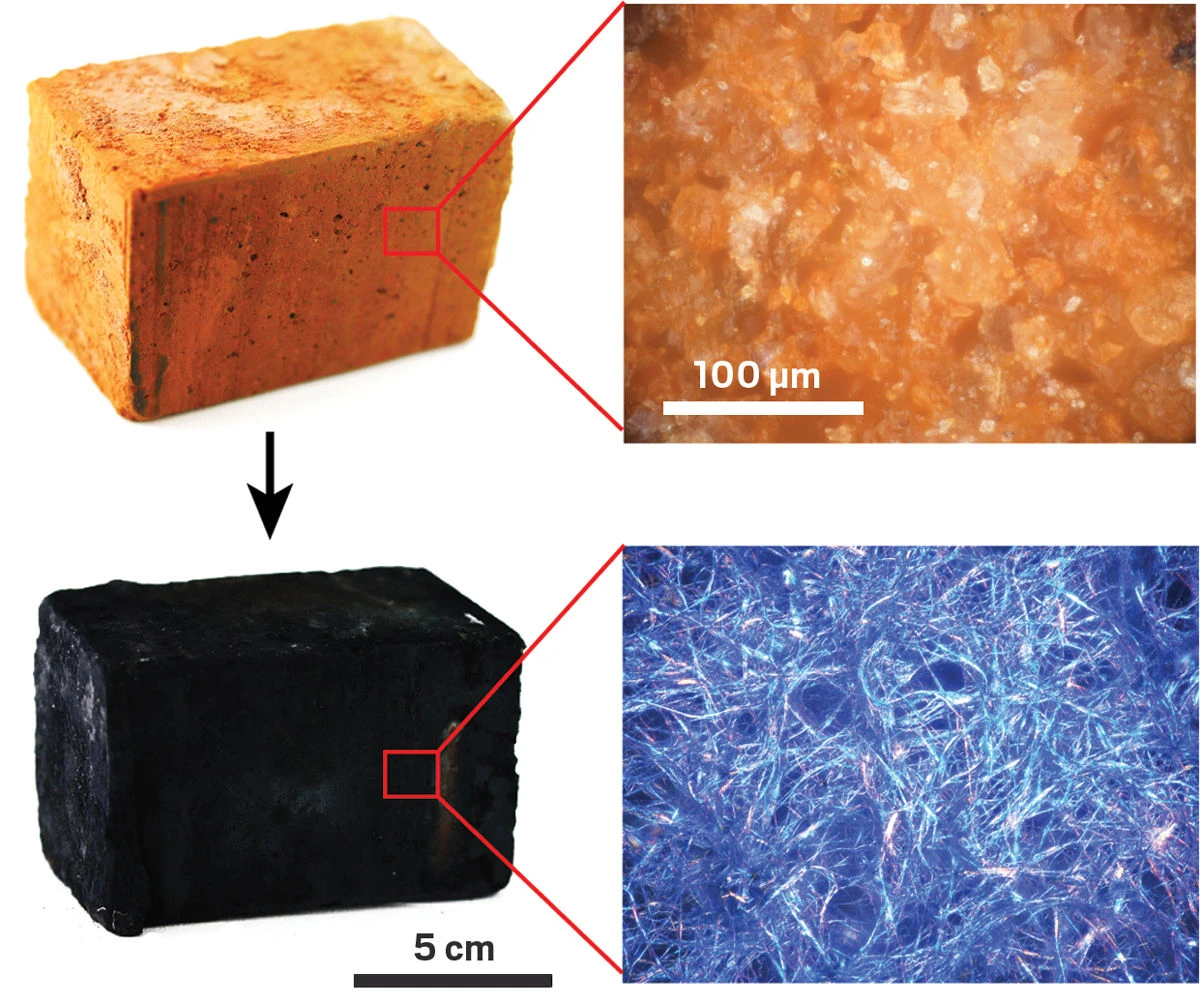
Success Stories
Some of the success stories of energy storing bricks are:
- Washington University in St. Louis researchers have developed a method to convert conventional bricks into supercapacitors by depositing conductive polymer nanofibers in their pores. They demonstrated that three brick supercapacitors connected in tandem could power a green LED light for up to 15 minutes. They also showed that the bricks could be recharged 10,000 times and withstand various environmental conditions.
- University of the West of England researchers have created living bricks that use microbes to generate electricity from urine and wastewater. They used 3D printing to develop hollow bricks containing microbial fuel cells to break down organic matter and produce electrons. They stacked the bricks to form a wall to power devices such as fans and lights.
- Indian Institute of Technology Madras researchers have designed bricks to store thermal energy and regulate indoor temperature. They used phase change materials, which can absorb and release heat during phase transitions, to fill the cavities of clay bricks. They tested the bricks in a model house and found they could reduce the cooling load by 28% and the heating load by 19%.
Types
Here are some of the types of energy storing bricks:
- Supercapacitor bricks: These are bricks that are coated with a conductive polymer and an electrolyte to create supercapacitors, which are fast-charging and high-power energy storage units. These can be connected to solar panels or other renewable energy sources to store excess electricity and use it when needed.
- Microbial fuel cell bricks: These bricks contain microbial fuel cells, devices that use microbes to generate electricity from organic matter, such as urine or wastewater. These can be stacked to form a wall that can power sensors or devices in the building.
- Thermal energy storage bricks: These are bricks filled with phase change materials, substances that can absorb and release heat during phase transitions, such as melting or freezing. They can regulate the indoor temperature and reduce the cooling or heating load of the building.
Advantages
Here are some of the advantages of energy storing bricks:
- Lower cost: They can utilize the existing brick manufacturing industry and infrastructure, reducing the need for additional materials and equipment. They can also leverage the abundant and cheap availability of bricks, one of the most common building materials in the world.
- Longer lifespan: They can offer longer than conventional batteries, as they can withstand more charge-discharge cycles and environmental conditions. They can also avoid the degradation and disposal issues associated with batteries containing toxic and hazardous substances.
- Higher safety: They can provide more protection than conventional batteries, as they do not pose the risk of fire, explosion, or leakage. They can also prevent overheating and overcharging problems that damage batteries and affect their performance.
- Easier integration: They can enable the integration of energy storage into buildings without requiring additional space or wiring. They can also enhance bricks’ aesthetic appeal and functionality, making them more attractive for architects and designers.
Disadvantages
Here are the disadvantages of energy storing bricks in addition to the ones highlighted above in this Future Disruptor discourse.
- Production capacity: They require a unique coating process to convert ordinary bricks into supercapacitors, which involves applying a conductive polymer and an electrolyte to the brick surface. This process is currently done manually in a laboratory setting, which is time-consuming and effort-intensive. The production process must be automated, scaled up, and integrated with the existing brick manufacturing industry to make them commercially viable.
- Low durability: They are exposed to various environmental factors, such as moisture, temperature, and mechanical stress, which could affect their performance and lifespan. They must withstand these conditions and maintain their functionality over multiple charge-discharge cycles.
Ethical Concerns
Here are some of the ethical concerns associated with energy storing bricks:
- Environmental impact: They could positively affect the environment by reducing the reliance on fossil fuels and the grid and enabling the integration of renewable energy sources into buildings. They can adversely affect the environment by increasing the demand for bricks, leading to more mining, deforestation, and emissions. They could also pose risks of leakage, contamination, or disposal of the conductive polymer and the electrolyte used to create the supercapacitors.
- Social justice: They could positively affect social justice by providing low-income and marginalized communities access to affordable and reliable energy, especially in remote or rural areas. They can negatively affect social justice by creating or exacerbating inequalities, conflicts, or dependencies among different groups of people, depending on the availability, distribution, and ownership of the bricks and the energy they store. They can raise privacy, security, or consent issues, especially if the bricks power sensors or devices to monitor or control the building occupants.
- Human dignity: They could positively affect human dignity by enhancing bricks’ aesthetic appeal and functionality and allowing people to express their creativity and identity by choosing bricks and their arrangement. They can negatively affect human dignity by reducing the naturalness and authenticity of bricks and modifying or objectifying them as mere energy storage units. They can challenge the human-nature relationship significantly if the bricks are altered with living organisms, such as microbes, to generate electricity.
Governance and Regulation
Here are some of the ways we can govern and regulate the concerns associated with energy storing bricks:
- Establishing standards and guidelines: They must have clear and consistent standards for production, installation, operation, maintenance, and disposal. These standards and policies should ensure quality, safety, performance, and compatibility with the existing electrical infrastructure and building codes. They should also address environmental and social impacts, such as emissions, waste, recycling, and access.
- Promoting innovation and collaboration: They must foster innovation and collaboration among various stakeholders, such as researchers, developers, manufacturers, users, and regulators. These stakeholders should share their knowledge, expertise, and resources to advance and explore its applications in various fields. They should also engage in dialogue and consultation to identify opportunities and challenges and find beneficial solutions.
- Ensuring accountability and transparency: They need to have mechanisms for accountability and transparency that can monitor and evaluate its impacts and outcomes. These mechanisms should involve independent and impartial audits, assessments, and reviews that can verify compliance and performance. They should also involve public and stakeholder participation and feedback that can inform and improve them and their governance and regulation.
History
While energy storage has been around for centuries, the specific technology of energy storing bricks has been a relatively new development in the past decade. However, the groundwork for this innovative technology was laid much earlier. Here is a timeline of key milestones in its history:
Early Foundations:
1745: Ewald Georg von Kleist invents the first capacitor, laying the groundwork for energy storage in electrical devices. This early device could store and release electrical charge but with limited capacity and efficiency.
1859: Gaston Planté invents the lead-acid battery, a breakthrough in rechargeable energy storage. Lead-acid batteries offer significantly higher capacity and efficiency than capacitors, making them practical for various applications like powering vehicles and lighting.
1950s-1960s: Development of supercapacitors, which could store and release energy much faster than batteries but with lower energy density. Supercapacitors found applications in situations requiring quick bursts of power, like regenerative braking in electric vehicles.
Birth of energy storing bricks:
2012: Researchers at the University of California, Berkeley, develop a method for coating brick surfaces with a conductive polymer, laying the foundation. This breakthrough allowed for the integration of energy storage capabilities into building materials like bricks.
2015: A team at Washington University in St. Louis, led by Dr. Julio D’Arcy, makes the first breakthrough. They discovered that the iron oxide pigment in red bricks can be converted into a conductive material, allowing them to store and release electrical energy. This discovery paved the way for practical and cost-effective technology.
2017: D’Arcy’s team publishes their findings in Nature Communications, spreading interest in energy storing bricks. This publication brought the technology to the attention of researchers, companies, and potential investors worldwide.
2018-2020: Continued research and development by D’Arcy’s team and other groups worldwide focused on improving efficiency, scalability, and cost-effectiveness. These advancements aimed to make them a viable alternative to existing energy storage solutions.
Present and Future:
- 2020s: Several companies are now developing and commercializing energy storing brick technologies. Some notable examples include St. Louis-based ElectroEnergy and Australian company BrickCell. These companies are working to bring these to market for various applications.
- 2023: The first pilot projects used in real-world settings begin to emerge. These projects demonstrate the potential of the technology in practical applications, such as storing solar energy for later use in buildings.
Tools and Services
Here are some of the tools and services that can take energy storing bricks to the next level:
- Chemical treatment: Companies like ElectroEnergy offer pre-treated bricks where the iron oxide pigment is chemically converted into a conductive material. This simplifies brick selection and treatment for builders.
- Electrochemical treatment: Researchers at universities and institutions like MIT are exploring electrochemical methods for converting existing bricks into energy storing bricks. This holds promise for retrofitting buildings and reducing waste.
- Surface coating: Some companies are developing conductive coatings that can be applied to existing bricks. This could offer flexibility but may require additional testing and verification.
- Specialized brick manufacturers: Companies like BrickCell are developing and manufacturing bricks specifically designed for energy storage. These bricks have optimized properties for efficient energy absorption and release.

How to Get Started?
If you are interested in learning more about energy storing bricks and how to get started with it, here are some steps you can take:
- Read the research papers: The best way to understand their scientific principles and methods is to read the original papers published by the researchers who developed them. These papers will detail how they work, what materials and equipment are needed, and what results and applications have been achieved. They are listed below in the “Learn More” section.
- Watch the videos: If you prefer a more visual and interactive way of learning about energy storing bricks, you can watch some videos demonstrating and explaining it. These videos will show you how they can be made and used and what benefits and challenges they offer.
- Join the community: If you want to connect with others interested in or working on them, you can join some online platforms and forums that facilitate discussion and collaboration. These platforms will allow you to ask questions, share ideas, and get feedback from other enthusiasts and experts.
- Try it yourself: If you can access the necessary materials and equipment, you can try to make your energy storing bricks and experiment with it. You can follow the instructions and guidelines provided by the researchers or the online platforms or improvise and innovate your methods and designs. You can also test and measure the performance and functionality and compare it with other energy storage devices.
Best Practices
Here are some of the best practices for getting the most from energy storing bricks:
- Choosing the right bricks: Not all bricks are suitable as they need a porous structure and a high iron oxide content to create supercapacitors. The researchers who developed them recommend using red bricks, the most common and cheap type of bricks with ideal energy storage properties.
- Optimizing the coating process: The coating process that converts the bricks into supercapacitors involves applying a conductive polymer and an electrolyte to the brick surface. This process must be done carefully and precisely, as it affects performance and durability. The researchers suggest using a vapor deposition method, which allows for a uniform and controlled coating of the bricks.
- Connecting the bricks properly: The bricks need to be connected to the power sources and loads to ensure the efficient and safe transfer of electricity. The researchers propose using metal wires or plates to connect the bricks and a voltage regulator or a converter to adjust the voltage and current.
- Protecting the bricks from damage: They are exposed to various environmental factors, such as moisture, temperature, and mechanical stress, which could affect their performance and lifespan. Using appropriate coatings, encapsulations, or sealants, the bricks must be protected from these factors. The researchers recommend using epoxy resin or silicone rubber to protect the bricks.
Related Terms
Here are a few terms related to energy storing bricks:
- Brick: A rectangular block of clay or other material used as a building material. Bricks have a porous structure and a high iron oxide content.
- Supercapacitor: A device that can store electric charge by creating an electric field between two electrodes. They can charge and discharge quickly and have a longer lifespan than batteries. They can convert bricks into supercapacitors by coating them with a conductive polymer and an electrolyte.
- Conductive polymer: A type of plastic that can conduct electricity. They can be deposited on various surfaces using chemical or physical methods. Energy storing bricks use a conductive polymer called PEDOT, which forms nanofibers in the pores of bricks and enables electricity storage and delivery.
- Electrolyte: A substance that can dissolve in water and produce ions, which are electrically charged atoms or molecules. They can enhance the conductivity and stability of supercapacitors. We can use an electrolyte called hydrochloric acid, which reacts with the iron oxide in bricks and allows the deposition of PEDOT.
- Microbial fuel cell: A device that uses microbes to generate electricity from organic matter. They can break down organic matter and produce electrons, which can be transferred to an electrode. We can use urine or wastewater to create living bricks containing microbial fuel cells.
- Phase change material: A substance that can absorb and release heat during phase transitions, such as melting or freezing. They can be used to store thermal energy and regulate temperature. They can design bricks with phase change materials, reducing buildings’ cooling or heating load.
Learn more
Research papers
- Energy storing bricks for stationary PEDOT supercapacitors by Hongmin Wang, Yifan Diao, Yang Lu, Haoru Yang, Qingjun Zhou, Kenneth Chrulski, and Julio M. D’Arcy: Describes how bricks can be converted into supercapacitors by depositing conductive polymer nanofibers in their pores. It also demonstrates how three brick supercapacitors connected in tandem can power a green LED light for up to 15 minutes.
- Living Architecture: Toward Energy Generating Buildings Powered by Microbial Fuel Cells by Jiseon You, Gimi A. Rimbu, Lauren Wallis, John Greenman, and Ioannis Ieropoulos: Presents how bricks can be created with microbial fuel cells, which can use urine or wastewater to generate electricity. It also shows how a wall of living bricks can power devices such as fans and lights.
- Thermal energy storage (TES) technology for active and passive cooling in buildings: A Review by N. A. Aziz, Nasrul Amri Mohd Amin, M.S. Abdul Majid, and Izzudin Zaman: Reports how bricks can be designed with phase change materials, which can absorb and release heat during phase transitions. It also tests how these bricks can reduce the cooling load by 28% and the heating load by 19% in a model house.
Books
- Energy Storage for Sustainable Microgrid by David Wenzhong Gao: Overview of various energy storage technologies and their applications in microgrids and small-scale power systems operating independently or in conjunction with the primary grid. It also discusses the challenges and opportunities of integrating renewable energy sources and energy storage devices into microgrids.
- Smart Energy Control Systems for Sustainable Buildings by John Littlewood, Catalina Spataru, Robert J. Howlett, and Lakhmi C. Jain: Explores the concepts and technologies of intelligent energy management for sustainable buildings, which are buildings that can optimize their energy consumption and production. It also presents the case studies and best practices of intelligent energy management in different types of buildings, such as residential, commercial, and industrial.
- Green Building Materials and Techniques by Vinod B R and Shobha R: Examines the properties and performance of green building materials and technologies, which are building materials and technologies that can reduce the environmental impact and enhance the functionality of buildings. It also analyzes the life cycle assessment and cost-benefit analysis of green building materials and technologies.
Courses
- Energy Conversion and Storage – University of Aberdeen: Introduces the principles and applications of energy storage and conversion technologies, such as batteries, fuel cells, supercapacitors, and solar cells. It also covers the design, operation, and performance of these technologies and how they can be integrated into renewable energy systems.
- Smart Grids for Smart Cities: Towards Zero Emissions – FutureLearn: Explains the concept and benefits of smart grids, which are electricity networks that can intelligently manage the supply and demand of electricity. It also discusses the technologies and strategies for implementing smart grids in smart cities, which are urban areas that use information and communication technologies to improve their sustainability and livability.
- Sustainable Building Design – MITx: Explores the concepts and methods of sustainable building design, designing buildings that can minimize their environmental impact and maximize their functionality. It also presents the tools and techniques for evaluating and improving the energy efficiency, indoor environmental quality, and life cycle cost of buildings.
Documentaries
- Power Trip: The Story of Energy: Explores the history and future of energy and how it shapes our civilization, culture, and environment. It also investigates the current and emerging energy technologies and trends and how they can address the global energy crisis and climate change.
- The New Fire: Follows young engineers and entrepreneurs developing advanced nuclear reactors, which are safer, cheaper, and cleaner than conventional nuclear reactors. It also explores the potential and challenges of nuclear energy as a solution for climate change and energy security.
I hope you enjoyed this insightful discourse. I believe that open dialogue and diverse perspectives are essential for fostering a deeper understanding of complex issues. Therefore, encourage you to share your thoughts and opinions in the comments below. Engage with other readers, challenge assumptions, and contribute to a rich and meaningful discussion. Your insights are valuable, and welcome you to participate actively in this intellectual exchange.
Together, we can explore new ideas, expand our horizons, and generate fresh perspectives.

Learner-in-Chief at Future Disruptor. A futurist, entrepreneur, and management consultant, who is passionate about learning, researching, experimenting, and building solutions through ideas and technologies that will shape our future.
Subscribe to the Future Disruptor newsletter.
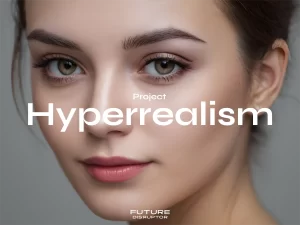
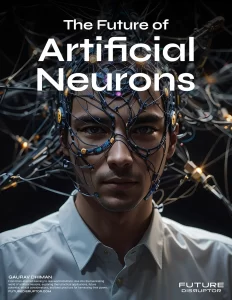
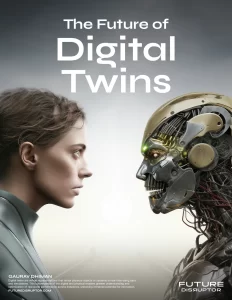
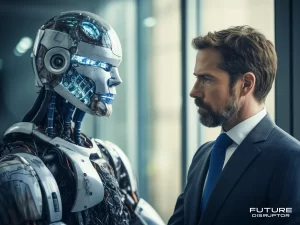
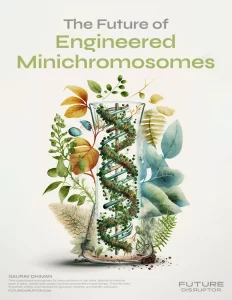
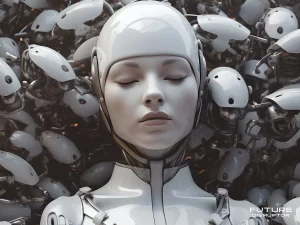
Leave a Reply